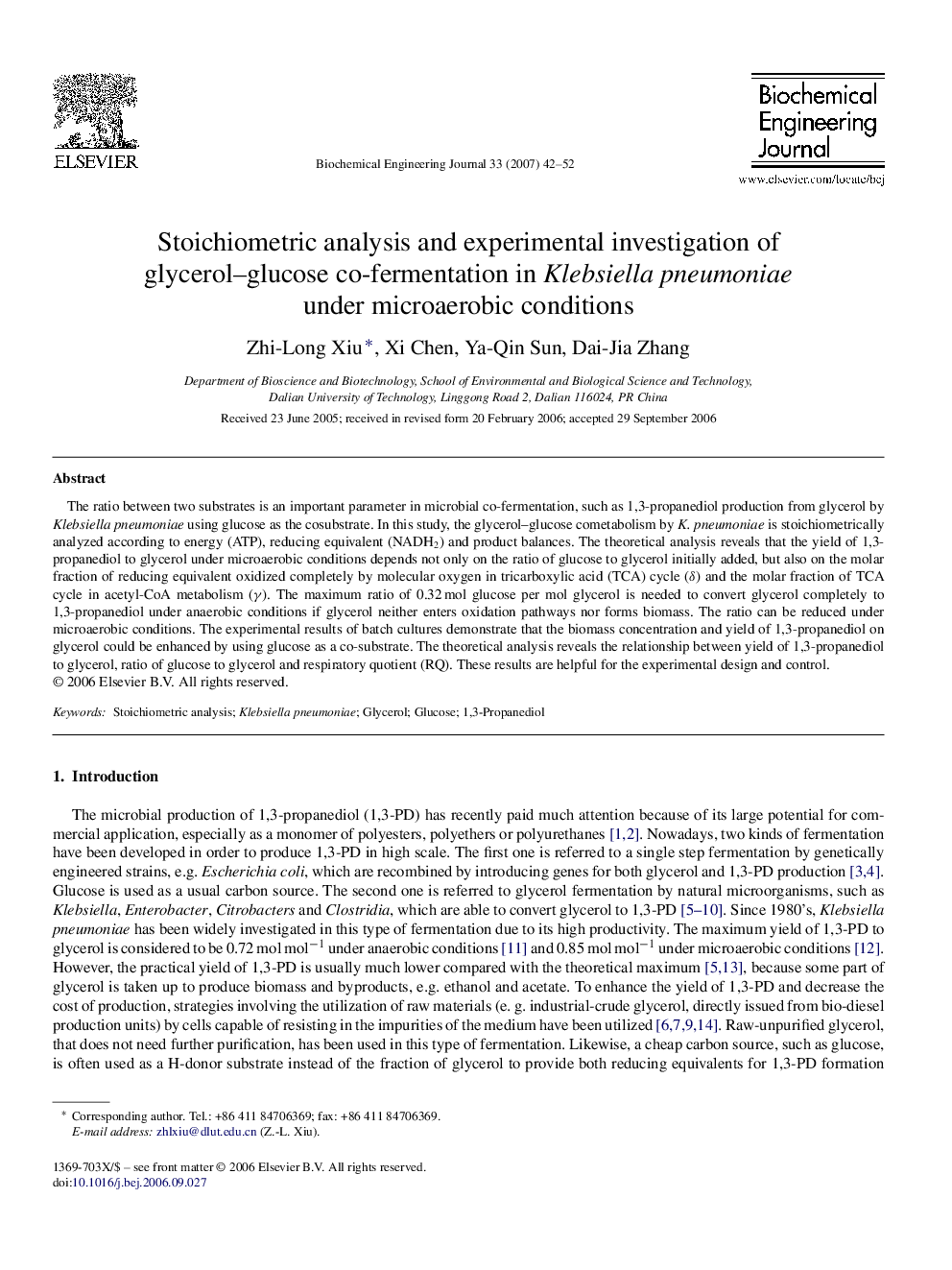| Article ID | Journal | Published Year | Pages | File Type |
|---|---|---|---|---|
| 4772 | Biochemical Engineering Journal | 2007 | 11 Pages |
The ratio between two substrates is an important parameter in microbial co-fermentation, such as 1,3-propanediol production from glycerol by Klebsiella pneumoniae using glucose as the cosubstrate. In this study, the glycerol–glucose cometabolism by K. pneumoniae is stoichiometrically analyzed according to energy (ATP), reducing equivalent (NADH2) and product balances. The theoretical analysis reveals that the yield of 1,3-propanediol to glycerol under microaerobic conditions depends not only on the ratio of glucose to glycerol initially added, but also on the molar fraction of reducing equivalent oxidized completely by molecular oxygen in tricarboxylic acid (TCA) cycle (δ) and the molar fraction of TCA cycle in acetyl-CoA metabolism (γ). The maximum ratio of 0.32 mol glucose per mol glycerol is needed to convert glycerol completely to 1,3-propanediol under anaerobic conditions if glycerol neither enters oxidation pathways nor forms biomass. The ratio can be reduced under microaerobic conditions. The experimental results of batch cultures demonstrate that the biomass concentration and yield of 1,3-propanediol on glycerol could be enhanced by using glucose as a co-substrate. The theoretical analysis reveals the relationship between yield of 1,3-propanediol to glycerol, ratio of glucose to glycerol and respiratory quotient (RQ). These results are helpful for the experimental design and control.
